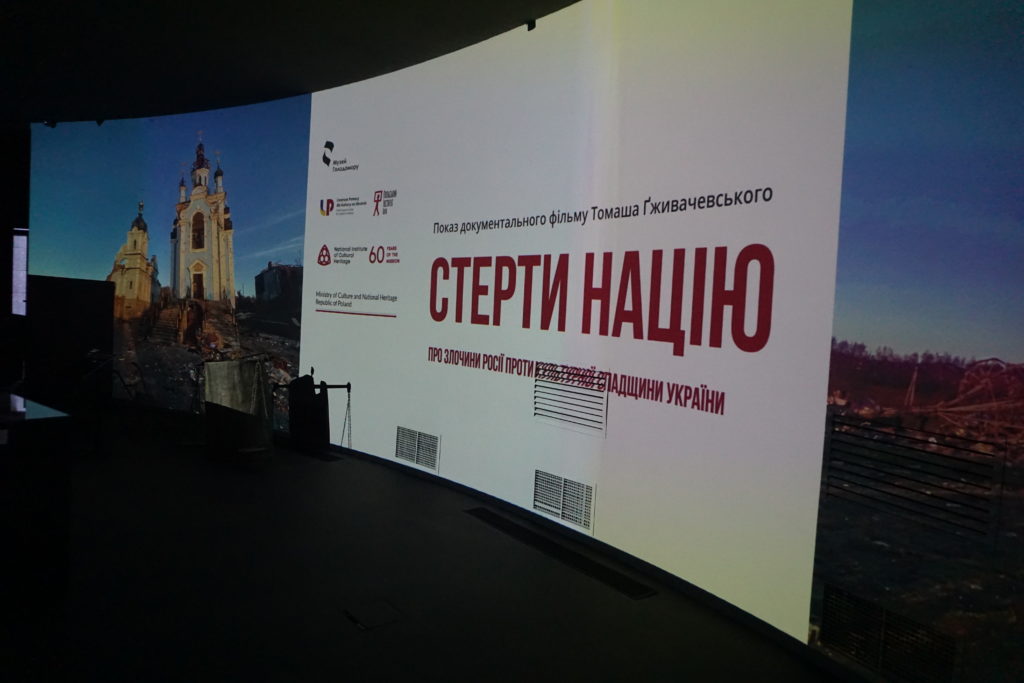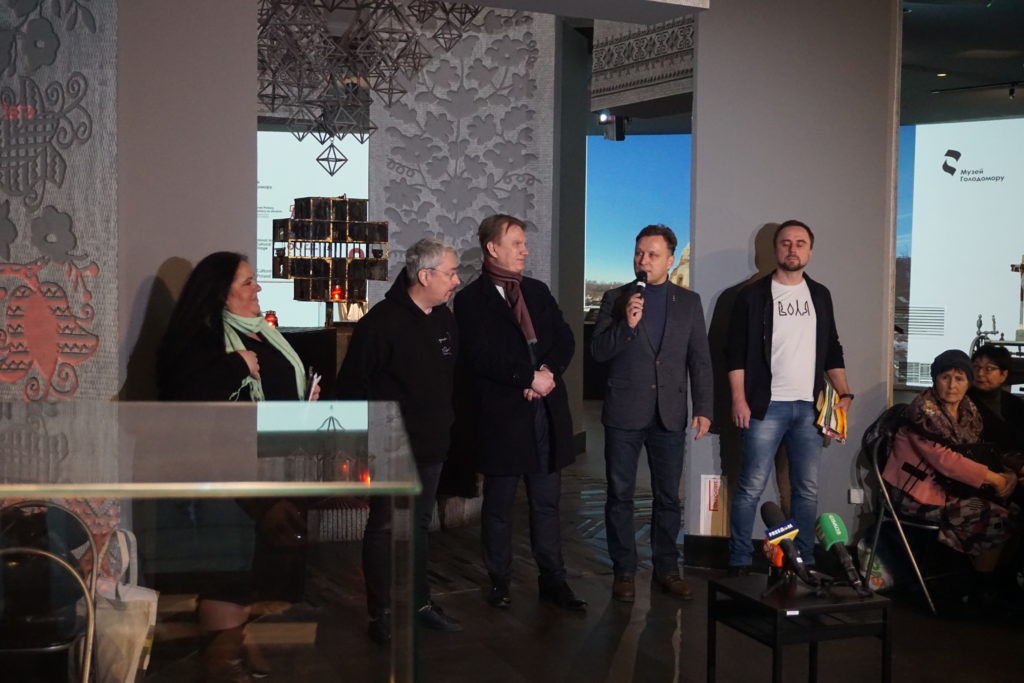The Holodomor Museum showed the film “Erase the Nation”, which records the crimes of Russians against Ukrainian culture
On Wednesday, February 22, the presentation of the documentary film “Erase the Nation” by the Polish director Tomasz Grzywaczewski took place in the Hall of Memory of our museum. It was filmed by order of the National Institute of Cultural Heritage of Poland within the framework of the Center for Cultural Support in Ukraine.

A presentation of the Holodomor Museum project “Propaganda that Kills” was also held as part of the event. Presenting both projects, the Acting General Director, Lesia Hasydzhak, emphasized:
“Preparing to commit genocide in the 1930s, the Bolsheviks launched a powerful propaganda apparatus. By manipulating consciousness, communist propaganda formed unattractive images of a kulak, a Petliurist, and a Ukrainian bourgeois nationalist. Conscious dehumanization then aimed to overcome the aversion to murder, to remove the moral prohibition against the destruction of the defenceless. After 90 years, Putin’s Russia, as the successor of Bolshevik Russia and the Soviet Union, has not changed its working methods. Long before February 24, aggressive anti-Ukrainian propaganda was launched, which justified and prepared society for invading Ukraine and for the genocide that Russia began from the first minutes of the full-scale invasion. Genocide, which, according to the methodology, has the same mechanism and ultimate goal – the destruction of the Ukrainian nation. We collected all this propaganda in a separate informational project of the museum, “Propaganda that kills”, which today is working and is being filled on our official website.”
And the results of this propaganda are presented in the documentary “Erase the Nation”.
Oleksandr Tkachenko, Minister of Culture and Information Policy of Ukraine, emphasized the purposeful destruction of Ukrainian heritage by the enemy, which is part of the conscious denial of Ukrainians as a nation.

“During the war, the Russians destroyed more than 1,200 objects of the cultural sphere, of which almost 400 objects are directly cultural monuments. And this is not accidental. We know that the attack on the museum in Ivankovo or Skovoroda museum in Skovorodynivka were purposeful, said the minister. – In this context, I remembered a case. When the decision was made to add the centre of Odessa to the UNESCO list, Russia was the only country that was against and tried to block the decision. They talked about then that there were no Ukrainians at all. When we spoke with the delegates of the World Heritage Committee later, they said: just as today, Russia denies the existence of Ukrainians, so tomorrow, they can deny the existence of any of you. Therefore, we are very grateful to our Polish friends for recording such crimes and showing them to the world.”
Ihor Poshyvailo, director of the Revolution of Dignity Museum, and head of the Heritage Emergency Response Initiative, emphasized how important foreign partners’ support is today.

“Since the first weeks of the Russian aggression, the world has organized a cultural lend-lease for Ukraine, offering assistance at various levels – from providing cultural institutions with packing materials, protective equipment, and ending with documentation, laser scanning, and 3D modeling of buildings that have already been damaged and which are still intact, but there is a threat of their destruction. We had a situation when rocket fire seriously threatened Sofia Kyiv. This is the case when there is no way to protect the monument: no sandbags or plywood shields will help. The only salvation is the documentation of such objects, which in the future will allow them to be rebuilt.”
Yurii Veres, one of the heroes of the film, the grandson of the artist Hanna Veres, whose works were destroyed during the shelling and fire in the Ivankiv Historical and Local History Museum, noted that saving our cultural values, which the nation has created over many years and centuries, is the foundation, on which the nation rests:
“I am holding my grandmother’s towel. And although she is no longer with us, there is a lot of love and a lot of life on this towel. And this love is being destroyed now, and it is being destroyed all over Ukraine. Culture is the foundation on which a nation rests. The cultural front stands side by side with the military front. We must preserve and restore our cultural values. Because this is a contribution to our victory.”
In the future, the film is planned to be translated into six languages and shown in various countries of Europe and the world so that they understand the scale of the destruction and the amount of aid that will be necessary to rebuild the monuments.
It is worth mentioning that Poland is one of the countries that first joined the process of providing assistance to Ukrainian museums and nature reserves. On behalf of all museum workers of Ukraine, we would like to express our gratitude to Polish colleagues and institutions that timely gave a helping hand to cultural institutions in Ukraine. And they continue to help today.
